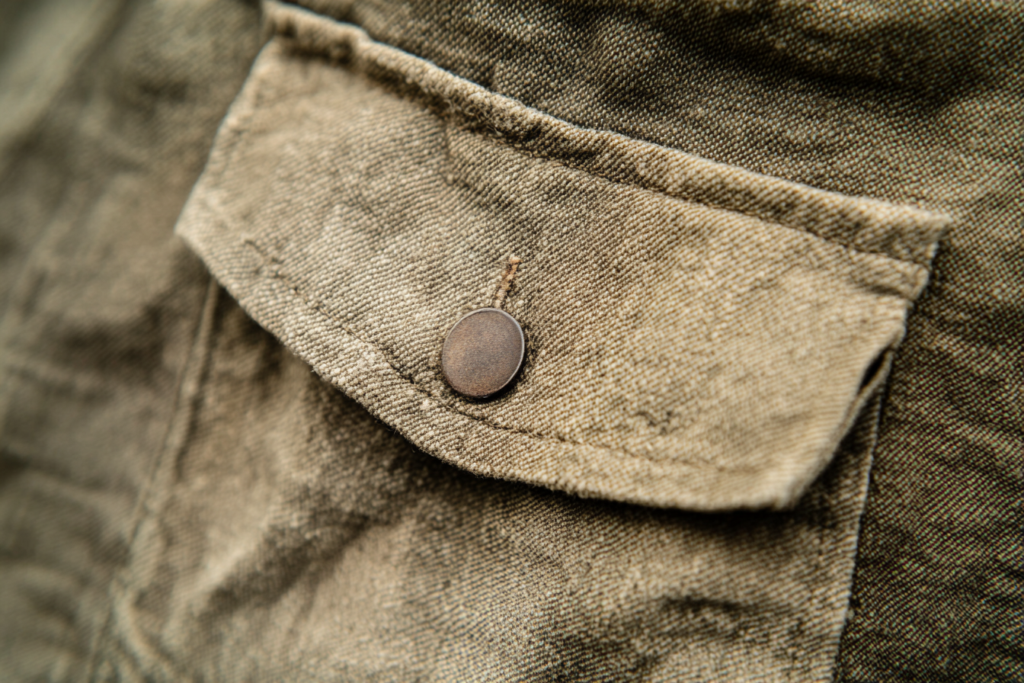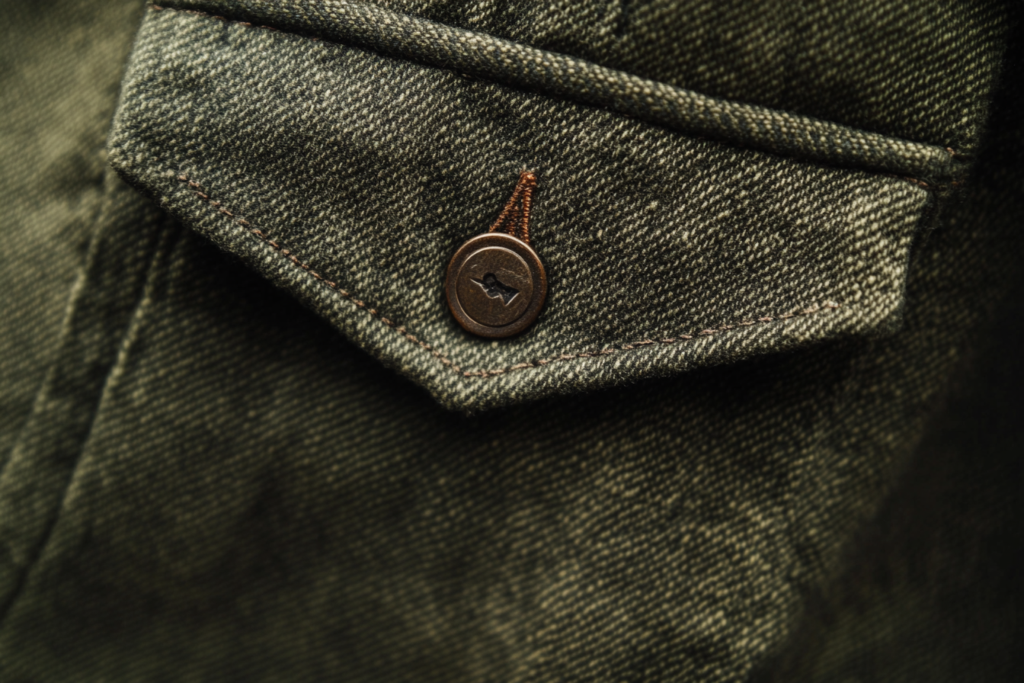Flap: The Pocket Feature That Adds Function and Style
Meta Description: A flap is the part of a pocket that covers the opening, enhancing both function and aesthetics in clothing. Learn about the role of pocket flaps in design.
What Is a Flap?
In garment construction, a flap refers to the part of a pocket that covers its opening. Typically made from the same fabric as the rest of the garment, the flap serves both functional and aesthetic purposes. It acts as a cover that secures the pocket contents while also contributing to the overall design and style of the garment. Flaps can be seen on various clothing items, including jackets, coats, trousers, shirts, and bags.
A pocket flap may be fastened with a button, snap, hook-and-loop fastener (Velcro), or simply left to hang freely, depending on the design. While the primary purpose of a flap is to keep the pocket’s contents secure, it also adds an extra layer of visual interest and texture to the garment.


Types of Flaps
Flaps come in different shapes and styles, with each contributing to the unique character of the garment. Below are some common types of flaps:
- Buttoned Flap:
- The most classic and common type of pocket flap, a buttoned flap is secured by a button sewn onto the flap and a buttonhole or loop on the garment. This style is typically seen on jackets, shirts, and trousers.
- Snap Flap:
- Snap flaps use metal or plastic snaps for closure, providing a faster and more efficient way to secure the pocket compared to traditional button closures. Snap flaps are often found on military jackets, cargo pants, and outerwear.
- Flap with Hook-and-Loop Fasteners (Velcro):
- Common in sportswear and casual wear, flaps secured with Velcro or similar hook-and-loop fasteners offer easy access to the pocket while providing a secure closure.
- Loose Flap:
- Sometimes, the flap is designed to hang loosely over the pocket without any closure. This style is often seen in fashion-forward designs or bohemian-inspired clothing, where the casual and laid-back aesthetic is key.
- Double Flap:
- In some designs, double flaps may be used, where two smaller flaps overlap or cover the pocket in a layered design. This is often seen in high-fashion garments or customized military wear.
Flaps in Different Garments
Flaps are a versatile feature that can appear on a variety of garments, contributing both functionality and style. Here’s where you might find pocket flaps:
- Jackets and Coats:
- Blazers, trench coats, and military jackets often feature flapped pockets as part of their tailored, polished look. The flap serves both to protect the contents of the pocket and to enhance the garment’s overall silhouette.
- Shirts:
- Shirts and button-downs may include flapped chest pockets for added storage. The flap enhances the pocket’s security and complements the structured design of the shirt.
- Trousers and Shorts:
- Cargo pants, chinos, and workwear trousers typically feature flapped pockets to keep tools or items safe. The flap adds a utilitarian look and a practical touch to these garments.
- Bags and Accessories:
- Handbags, messenger bags, and backpacks often have flapped closures to protect the contents and add visual interest. These types of flaps can be secured with buttons, magnets, or buckles for ease of access.
- Outerwear and Sportswear:
- In outerwear like fleece jackets, raincoats, and sports jackets, flapped pockets keep small items safe while ensuring the garment retains a streamlined look.
Benefits of Pocket Flaps
- Security:
- The most obvious benefit of a pocket flap is its ability to secure items. Whether it’s a wallet, phone, or keys, a flap helps ensure that objects don’t fall out of the pocket, especially in active environments or casual wear where ease of movement is important.
- Aesthetic Appeal:
- Flaps also serve as an aesthetic feature, adding interest to an otherwise plain pocket. Depending on the design, they can make a garment look more structured, vintage, or functional.
- Weather Protection:
- On garments like jackets and coats, pocket flaps can help protect the contents from the elements—such as rain or dirt—making them a practical feature in outdoor clothing.
- Versatility:
- Whether designed for fashion or function, the pocket flap is adaptable to various styles and garment types. It can be used to enhance a tailored look or give off a more relaxed, casual vibe.
How to Style Pocket Flaps in Clothing
Flaps may seem like a small detail, but they can make a significant impact on the overall look and feel of a garment. Here’s how they can be styled:
- Tailored and Structured Looks:
- For formal jackets, blazers, and suits, a well-placed buttoned or snap flap pocket helps keep the garment sharp and refined, adding an element of practical sophistication.
- Casual and Utilitarian Styles:
- In cargo pants, work jackets, and military-inspired clothing, flap pockets lend a rugged, utilitarian feel. The flaps provide practicality without sacrificing style.
- Bohemian and Relaxed Vibes:
- On bohemian-inspired garments or casual wear, loose or flap pockets with no closures add a relaxed and effortless charm, complementing the free-flowing, comfortable style.
- Streetwear and Fashion-Forward Designs:
- In streetwear or high-fashion collections, flaps may be designed as a bold statement, made with unique materials or adorned with decorative features like embellishments or contrasting stitching.
Conclusion: Flaps as a Functional and Stylish Feature
Pocket flaps are more than just a practical design element; they are a versatile feature that enhances both the function and aesthetics of a garment. From security to style, flaps play an important role in everyday clothing, from activewear to tailored suits. Whether for practical reasons or as a fashion statement, flaps continue to be an essential part of garment design, adding structure and personality to any piece.



